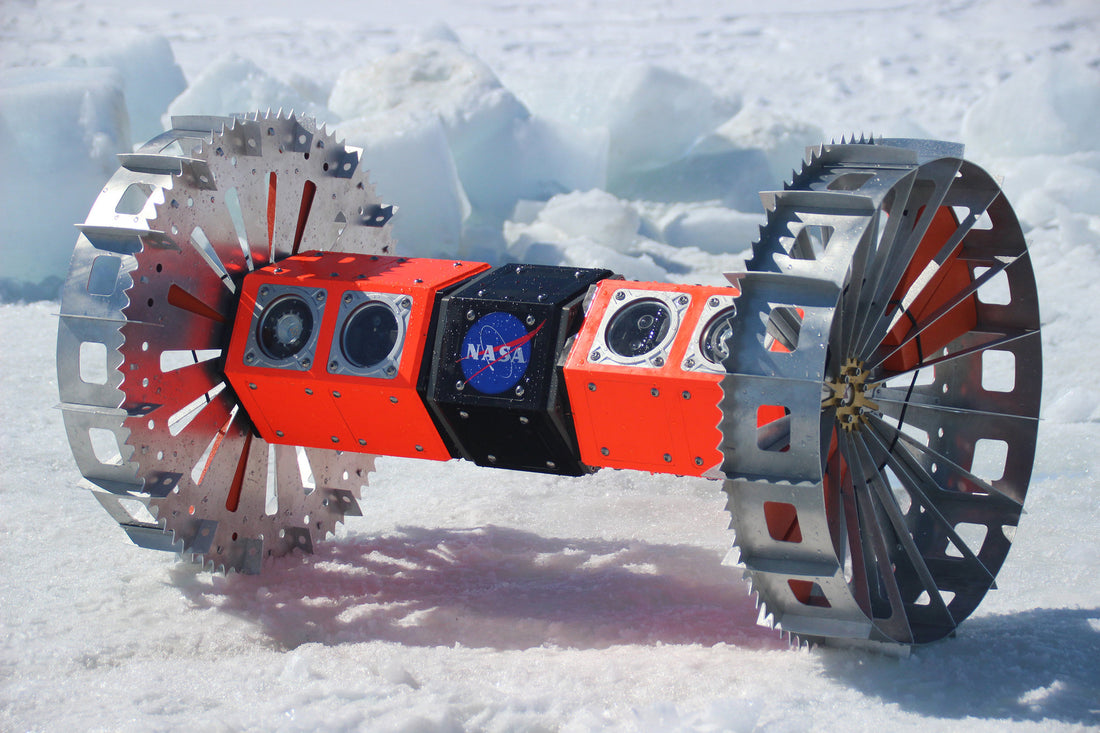
NASA's Alien-Hunting Aquatic Rover Is The Droid We Are Looking For.
Share
NASA has tested out an upside-down alien-hunting underwater rover in the frigid conditions of Antarctica late last year and the little fella has reportedly passed with flying colours.
BRUIE - that's its name - is a joint effort between NASA and the University of Western Australia (UWA) that looks little more than an axle complete with wheels on each end.
Despite looking like a rudimentary attempt at building lego, BRUIE is actually quite fascinating when in action.
It rolls, of course, but is actually very buoyant...
"But how does it roll if it's buoyant...?" we hear you say.
A very astute observation!
BRUIE works autonomously, sniffing out signs of life and according to UWA engineer Dr Dan Arthur, BRUIE "...is designed to drive along the underside of ice crust and uses onboard instruments to detect compounds that are of interest to space scientists. In the future, we will be reliant on technologies like BRUIE to enable the exploration of these ocean worlds and beyond.”

You see, BRUIE has purpose-built 'bladed' wheels not too different from ice climbers boots that poke into the rough crevices of the ice sheet as the rover plugs along.
The underside of ice has been almost completely unexplored on distant worlds until now and NASA hypothesises that the best chance at life on some faraway planets, like Saturn's Enceladus moon, is under the safety of thick ice sheets.
Dan Arthur suggests the maiden voyage for BRUIE could be the frigid Jupitarian moon of Europa - a candidate that ticks all the boxes for potential aquatic life - after NASA's expected flyby and scanning mission in a few years.
The mission - named Europa Clipper set for the mid-2020s - would ideally be followed by the launch and arrival of an updated version of BRUIE and begin the hunt for extraterrestrial life aboard the moon.
“Europa Clipper could be followed by a subsequent mission. Which will aim to land on the surface of Europa and deploy an evolution of BRUIE, beginning the search for life on the icy moon.” said an excited Dr Arthur.

Saturn's Enceladus moon is the perfect subject for a BRUIE excursion.
In the mid-2020s, NASA will launch interplanetary mission Europa Clipper, an orbiter which will orbit Jupiter and perform multiple flybys of its ocean moon Europa to capture scientific imagery and other data.
The team of scientists from NASA's Jet Propulsion Laboratory including UWA's Dr Arthur travelled to Antarctica which most accurately represents a frozen ocean here on Earth. The trip was made possible with the help of our Australian Antarctic Program which oversees the management of Aussie research stations in the area.
"We developed the project scope over a number of months and contributed to the general robotics work in the lead up to the trip," Dr Arthur said. The NASA personnel commented on how smooth working with UWA robotics was as well as the help provided by our Australian Antarctic Program.
"WA is a uniquely well-resourced location for the development of autonomous robotics systems that interact with geology," added Dr Arthur.
While we anxiously wait for the first voyage of BRUIE, tests continue to go ahead as planned and the little rover has a side gig supporting oceanographic research in some of the harshest environments on Earth.
Stay tuned for more...
#Space_Aus




